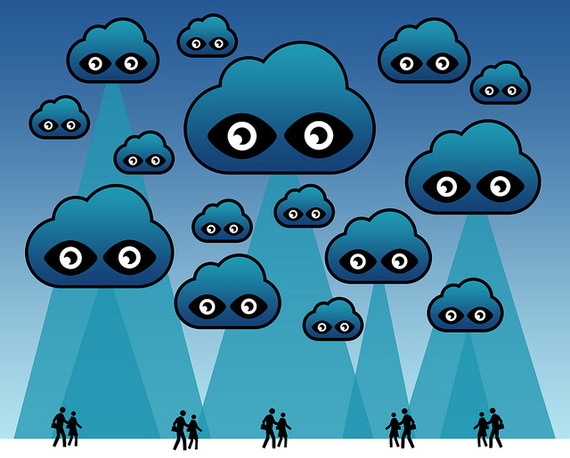After four months of rejection by employers, a man named Kim did one simple thing that changed his luck. He added "Mr." to the front of his name on his resume. And then he got a job.
Discrimination and bias, often unconscious, are still alive and well in the United States' workplace.
Take a look at these studies: Recruitment firm Hays created two resumes, one for Susan and one for Simon. The resumes were actually the same, just named differently. They then asked hiring managers to evaluate the candidates based on their attributes and suitability. In large companies, which means over 500 employees, 62 percent of hiring managers said they'd likely interview Simon, while only 56 percent said the same about Susan. The more experienced hiring managers, ones that hire more than 20 times per year, had the same bias: 65 percent of them preferred to interview Simon.
This bias against women happens in all industries. In the top research universities, emerging female scientists are rated lower than emerging male scientists with identical credentials.
Bias Doesn't End With Gender
Unfortunately, there is more to a name than just an associated gender. When it comes to minorities, the statistics are staggering. Cambridge-based National Bureau of Economic Research created two comparable dummy resumes, half of which had "white-sounding" names and half of which had "black-sounding" names. They then responded to 1,300 classified ads and found that black-sounding names were 50 percent less likely to get a callback than white-sounding names.
What's even more shocking is what happened when they sent out resumes that were of exceptional quality. The high-level resumes improved the likelihood of getting called by 30 percent for those with white-sounding names. Yet for those with black-sounding names, the same exceptional resume only increased their likelihood of a call by nine percent.
What we are seeing is that bias, unconscious or not, is a very real thing, and being qualified doesn't override it.
After years of trying to eliminate bias and discrimination in the workplace by legal means, the truth is that it still exists. Where are we going wrong?
Big Data For HR is the Next Frontier for Eliminating Workforce Discrimination
Big data for Human Resources (known as predictive analytics, talent analytics, workforce analytics, HR analytics, and human capital analytics) may be the next frontier for cutting discrimination and bias. We can't give up on humanity to move past discrimination, but advanced technology can work in partnership with people to bridge the gap of inclusion.
HR analytics is the practice of using qualitative and quantitative data to bring predictive insight into the decision-making needed to manage the people in organizations. It is not simply about raw data; it is about what insights that raw data can provide, when combined with a range of measurements and tests, to move closer to answering questions relevant to your organization. While HR analytics may look to the past for data, its main function is to create predictive behavior for the future.
Five Ways HR Can Use Predictive Analytics to Move Past Discrimination and Bias
Using a data-driven approach to decreasing bias in organizations moves far beyond using a platform to hide the name and gender during initial screening from hiring managers. There are many high-level ways where it can help. Here are five ways HR analytics can be used to help organizations move past discrimination and bias:
- Perhaps the most impactful use of HR analytics is how data can be used to influence top leaders. Data can be presented in graphic and statistical reports in ways that are easy for leaders to understand. When armed with facts that are clear and actionable, decision makers will be able to tackle pinpointed organizational issues, and use resources appropriately.
- When tackling complex questions, organizations can use in-memory analytics, which are designed to deliver multi-dimensional analysis. For example, for an organization to tackle pay gaps, they may want to know if their minority employees receive raises at the same rate as the rest of the population. This question has many layers such as rate of change across populations, whether performance standards are equal among populations, market pay rates, employee tenure and more.
- Organizations can use predictive analytics to determine who is at risk for resigning. Recruiting diverse talent is one thing, but if your minority talent resigns, you haven't done much to improve the diversity of your workforce. Predictive analytics can look at specific gender or ethnic populations to determine who is likely to resign, and HR can use that information to create initiatives to improve the work experience of those populations more likely to leave.
- Companies like Seedcamp move beyond demographics by using psychographics (the study of personality, interests, work style, etc.) to identify teams with the greatest chances for success. The individual is seen as a team member from the start, which helps not only find a candidate with applicable experience, but also a candidate who is a good fit. Companies that are using psychographics are able to eliminate the constraints of the information provided by a resume alone, as well as the unconscious bias that resumes often carry with them.
- Using data can also enable companies to focus on the core vales and behavioral traits of candidates. Saberr uses algorithms to compile, process and compare the fundamental values, behavioral compatibility, and diversity to predict the potential strength of the interpersonal relationship between the applicants and potential employer. They do this with a survey for both the applicant and the employer that moves past skills and credentials, thereby bypassing initial bias in the hiring process.
Examples like these give us just a glimpse at the potential big data has to enhance effectiveness of HR leaders, who may otherwise be primarily influenced by their own human experience.
When you are part of a human system, it is very difficult not to make decisions based in your own experiences in life. On a basic level, people tend to hire those like themselves regardless of gender or race. Add in our instincts, relationships, work experiences, generational traits, and deeply ingrained cultural belief systems and what do you get? A lot of unconscious forces that can interfere with our ability to hire and promote in a truly unbiased way. Turning to a more data-driven approach will mitigate those factors, and potentially move the United States' workforce into one that reflects its rich cultural diversity, no longer leaving the talent of women and minorities untapped.
Using big data to inform decisions about human beings can make some people uncomfortable. How do you feel about it? Do you believe it can make a difference in increasing diversity in the workforce? I'd love to hear your opinion. Please leave a comment below, send me an email, or find me on Twitter.
Anne Loehr is a sought after keynote speaker, writer, consultant, and trainer. She helps leaders in large organizations connect their everyday decisions today to the future workplace. Her end goal is to help organizations retain their top talent and not only survive, but thrive. To learn more about Anne, check out www.anneloehr.com or follow her on Twitter.
Photo credit: orvalrochefort / Foter / CC BY-NC-SA



